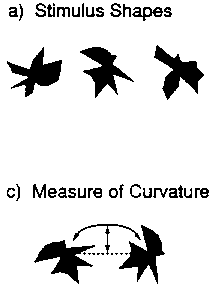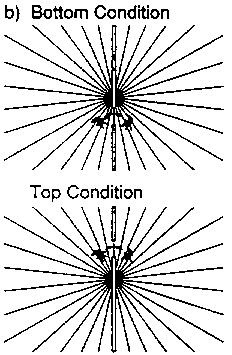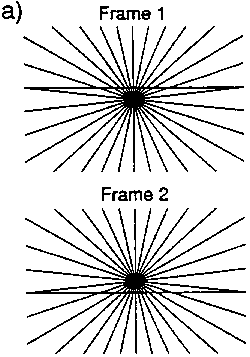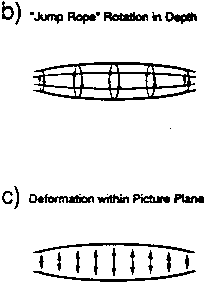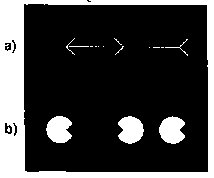Geometric Illusion
Bends the Path of Apparent Motion and Introduction of the Liar-Muller Illusion
Michael K. McBeath
ABSTRACT
This study tests if the path of apparent motion can be bent due to a
geometric illusion. The opening experiment uses the path of apparent motion
as a test contour to explore if the Hering and Ehrenstein circle illusions
are better explained in terms of contour interactions or space deformation.
The contour interaction explanationn specifies that distortion is experienced
because acute angles appear expanded. If angle expansion occurs, the path
of apparent motion should appear to bend in the same direction as test
contours in static and kinetic versions of the illusion. In contrast, the
space deformation explantion specifies that if a test contour appears straight
(as does the path typically favored in apparent motion), it must actually
bend in the opposite direction as in static and kinetic versions of the
illusion. Results confirmed the prediction of the space deformation explanation.
In a following demonstration, apparent motion between alternately presented
top and bottom test lines in the Hering illusion produced a "jump
rope illusion" that appears as one bent line rotation in depth around
the horizontal axis. The findings provide the first reported demonstrations
of apparent kinetic geometric illusions, both in the picture plane and
in depth. The Liar-Muller illusion is introduced as a kinetic geometric
illusions, both in the picture plane and in depth. The Liar-Muller illusion
is introduced as a static example in which distortion opposes the contour
interaction description of the classic Muller-Lyer illusion.
Go to Top of Page
Go
to McBeath
Research Page
Go to McBeath
Home Page
